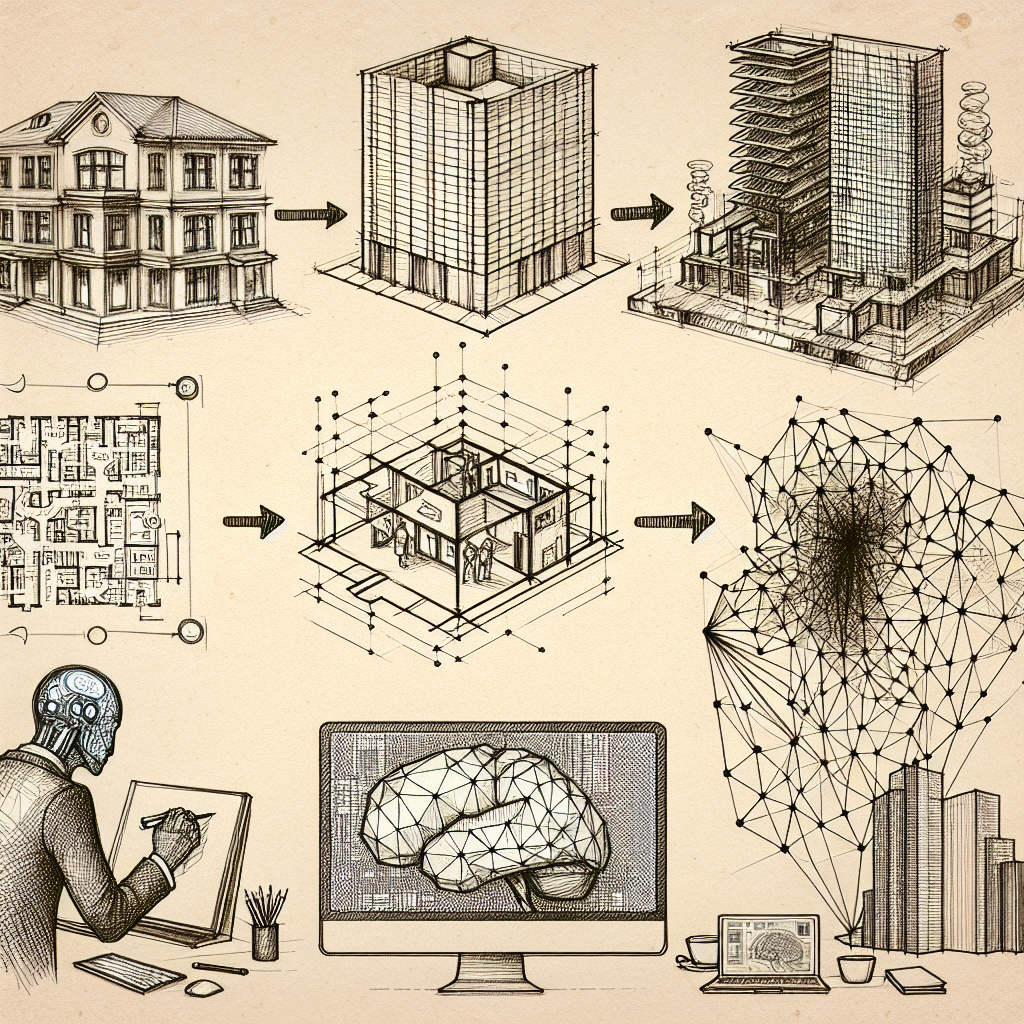The field of architectural visualization has undergone a significant evolution in recent years, thanks in large part to advancements in artificial intelligence (AI) technology. AI has revolutionized the way architects and designers create and present their projects, offering powerful tools that streamline the design process, enhance visualization capabilities, and provide valuable insights into how a building will look and function.
In this article, we will explore the evolution of architectural visualization with AI, highlighting the key technologies and trends that have shaped the industry. We will also address some frequently asked questions about AI in architectural visualization, providing insights into how this technology is changing the way we design and build the world around us.
The Evolution of Architectural Visualization with AI
Architectural visualization has long been an essential tool for architects and designers, allowing them to communicate their ideas and concepts to clients, stakeholders, and the public. Traditionally, this process involved creating 2D drawings, blueprints, and physical models to convey the design of a building. However, with the advent of computer-aided design (CAD) software in the 1980s, architects began to explore new ways of visualizing their projects in 3D.
Over the years, advancements in computer graphics and rendering technology have enabled architects to create increasingly realistic and immersive visualizations of their designs. These tools have been instrumental in helping architects and designers convey the look and feel of a building, explore different design options, and identify potential issues before construction begins.
In recent years, AI has emerged as a powerful tool for enhancing architectural visualization. AI algorithms can analyze vast amounts of data, generate realistic 3D models, and even predict how a building will perform in different lighting conditions, climates, and environments. This technology has revolutionized the way architects and designers create and present their projects, offering new opportunities for innovation and collaboration.
One of the key applications of AI in architectural visualization is generative design. This technology uses algorithms to explore a wide range of design options, automatically generating 3D models based on specified parameters such as building size, shape, materials, and environmental factors. Generative design can help architects and designers quickly explore different design options, optimize building performance, and identify innovative solutions that may not have been considered otherwise.
Another important application of AI in architectural visualization is real-time rendering. AI-powered rendering engines can generate high-quality, photorealistic images of a building in real-time, allowing architects and designers to visualize their projects in unprecedented detail. This technology enables stakeholders to experience a building as if it were already built, helping to communicate the design intent and vision more effectively.
AI is also being used to enhance the sustainability and efficiency of buildings. By analyzing environmental data, AI algorithms can optimize building performance, reduce energy consumption, and enhance occupant comfort. This technology can help architects and designers create more sustainable and environmentally friendly buildings, contributing to the global effort to combat climate change.
Overall, AI has transformed the field of architectural visualization, offering powerful tools that streamline the design process, enhance visualization capabilities, and provide valuable insights into how a building will look and function. As AI technology continues to advance, we can expect to see even more innovative applications in architectural visualization, revolutionizing the way we design and build the world around us.
FAQs about AI in Architectural Visualization
Q: How is AI used in architectural visualization?
A: AI is used in architectural visualization to streamline the design process, enhance visualization capabilities, and provide valuable insights into how a building will look and function. AI algorithms can analyze data, generate 3D models, optimize building performance, and create photorealistic renderings in real-time.
Q: What are the benefits of using AI in architectural visualization?
A: The benefits of using AI in architectural visualization include faster design iterations, enhanced visualization capabilities, improved building performance, and more sustainable and environmentally friendly buildings. AI technology can help architects and designers create innovative and visually stunning projects that meet the needs of clients and stakeholders.
Q: Can AI replace human architects and designers?
A: While AI technology is transforming the field of architectural visualization, it is unlikely to replace human architects and designers entirely. AI tools are meant to augment human creativity and expertise, not replace it. Architects and designers will continue to play a crucial role in the design process, bringing their unique vision and expertise to create innovative and inspiring buildings.
Q: How can I learn more about AI in architectural visualization?
A: There are many resources available to learn more about AI in architectural visualization, including online courses, workshops, conferences, and industry publications. Architects and designers can also collaborate with AI experts and technology providers to explore how AI can enhance their design process and visualization capabilities.
In conclusion, the evolution of architectural visualization with AI has revolutionized the way architects and designers create and present their projects. AI technology offers powerful tools that streamline the design process, enhance visualization capabilities, and provide valuable insights into how a building will look and function. As AI technology continues to advance, we can expect to see even more innovative applications in architectural visualization, shaping the future of design and construction.

